Cycling / Speed-Pedelec / Study Tour / Traffic safety
Speed-Pedelec Tour Through Germany and Switzerland
Last week, Cycling Mobility Advisor Anna Tailliez and Strategic Advisor Dagmar Köhler travelled to Konstanz, Germany to do a study tour using Speed-Pedelecs. This blog discusses the differences between riding a speed-pedelec in Germany and Switzerland respectively.
Speed-pedelecs are electric bicycles capable of reaching speeds of up to 45 km/h. Therefore, they are technically classified as light motor vehicles. Does this imply they are a threat to pedestrians and slower cyclists and should ride on the road, rather than on cycle paths?
Generally speaking, Germany requires speed-pedelecs to cycle on the road, whereas Switzerland requires speed pedelecs to use cycle paths.
Why is this relevant? Speed-pedelecs are gaining popularity in some European countries and studies show their potential for modal shift and – unlike other innovations in the vehicle sector – proven potential to replace car trips.
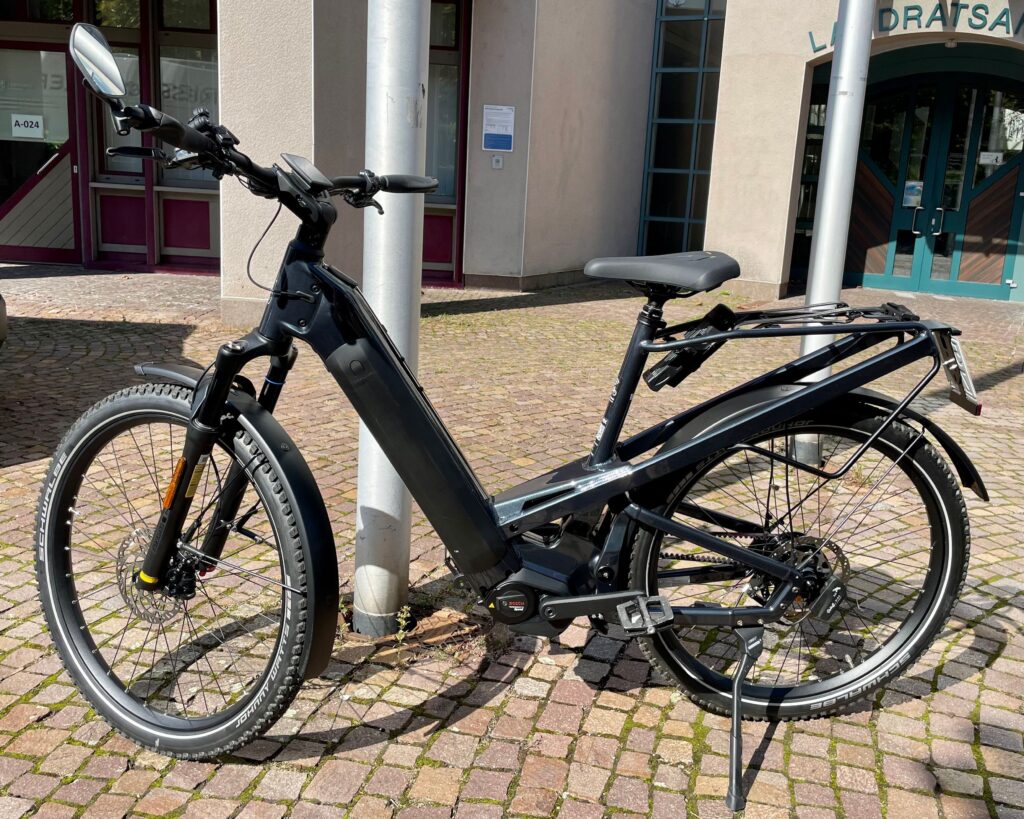
Due to their higher speed and performance, speed-pedelecs are subject to special regulations in many countries. Switzerland has paved the way for these fast bicycles in Europe by allowing speed-pedelecs to use cycling infrastructure by default. In Germany, however, current regulations require that speed-pedelecs be ridden on the road. The only exceptions are in two federal states: Nordrhein-Westfalen and Baden-Wurttemberg, which allow local authorities to open cycling infrastructure to speed-pedelecs under certain conditions. Konstanz and the surrounding districts are currently establishing a network for speed-pedelecs as a sustainable alternative for commuters.
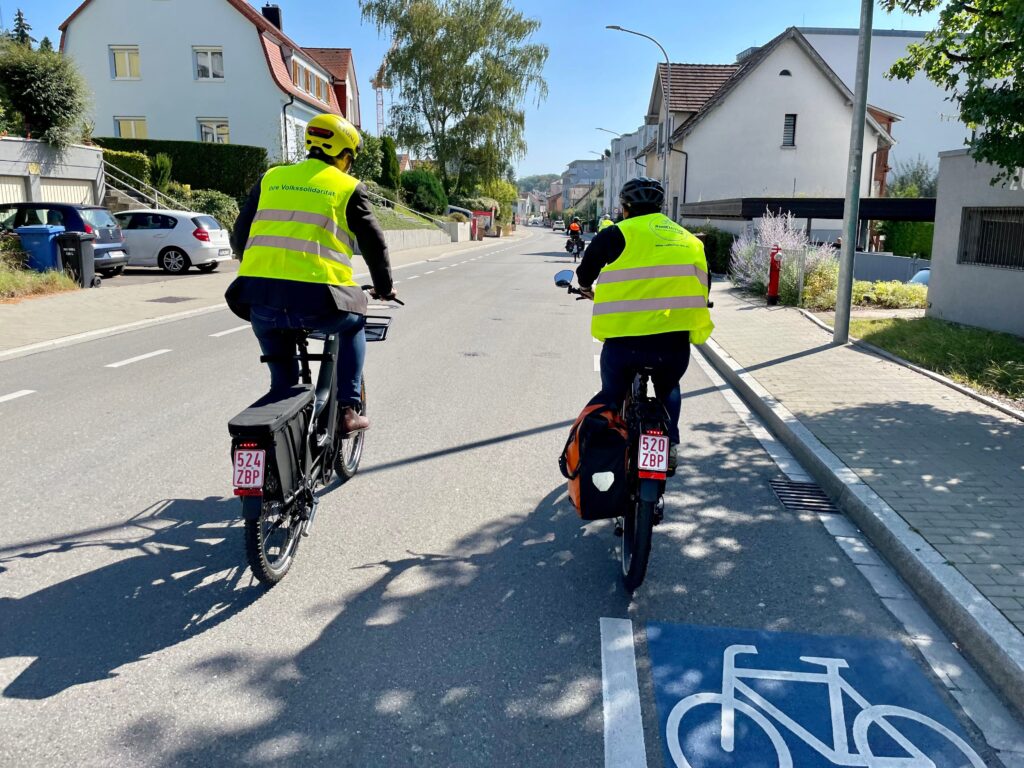
Along with the support of CIVINET DSR, the city of Konstanz, and the district of Konstanz, Mobycon organized a study tour that allowed transport planners and policymakers to discuss speed-pedelecs and ride them. The group met in Konstanz on 19 September 2024 and was blessed with great weather at Lake Constance. Mobycon’s Dagmar Köhler introduced the differences in road space allocation across Europe. Sandra Sigg from the district of Konstanz and Gregor Gaffga from the city of Konstanz both reported their plans and implementation of a speed-pedelec network. Prof. Dr. Dorothea Schaffner of FHNW School of Applied Psychology shared facts and figures about speed-pedelecs in Switzerland.
Results from the FFG-funded DACH research project SESPIN shall soon be publicly available and provide new insights on speed-pedelec users and their implications on infrastructure.
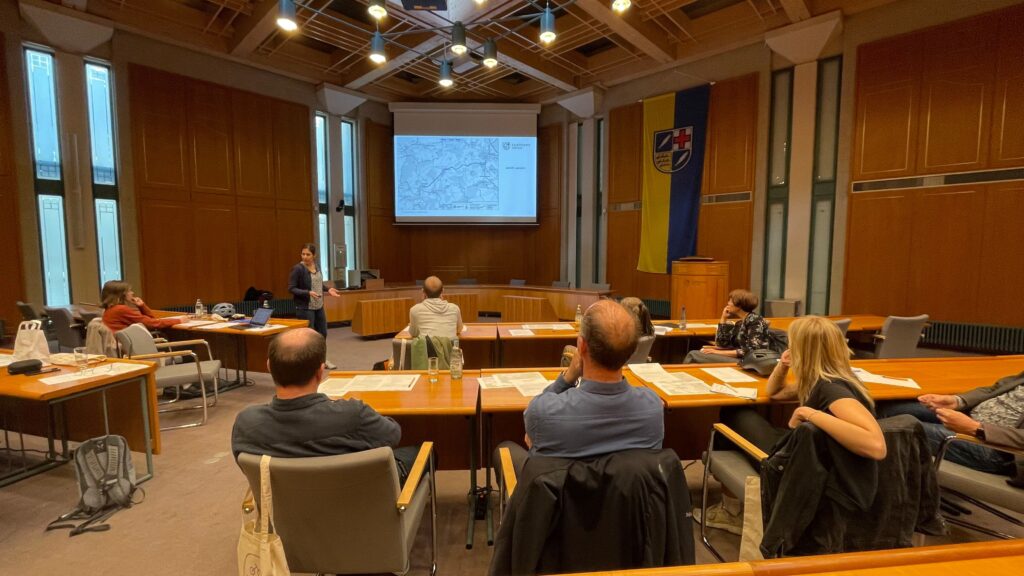
To experience what it’s like to ride a speed-pedelec, the group mounted the bikes and rode throughout the city of Konstanz – ignoring bicycle infrastructure and cycling on the road instead. After a break for lunch and reflection, they hopped on the bikes again, crossed the border into Switzerland, and switched to cycling on the bike paths.
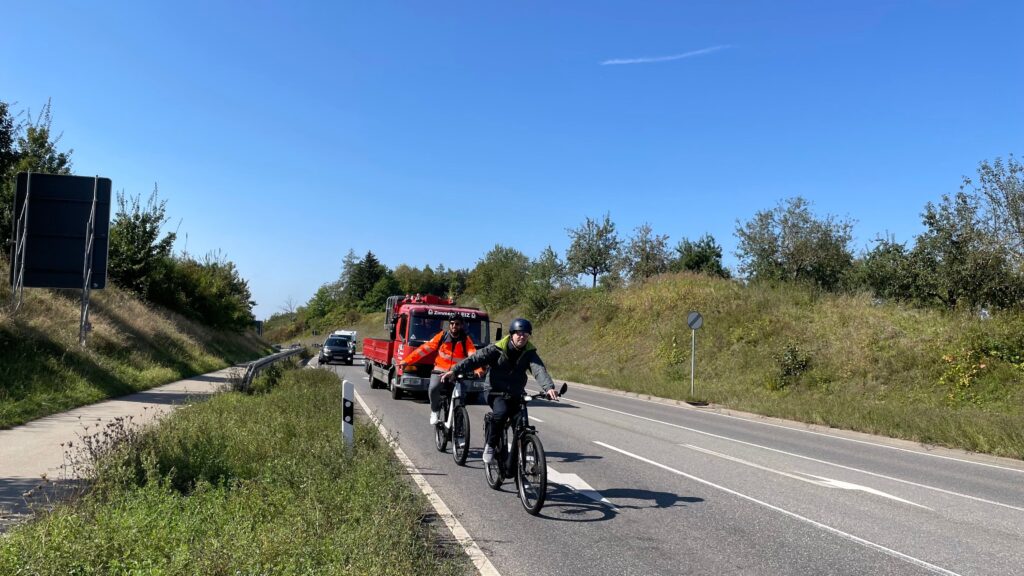
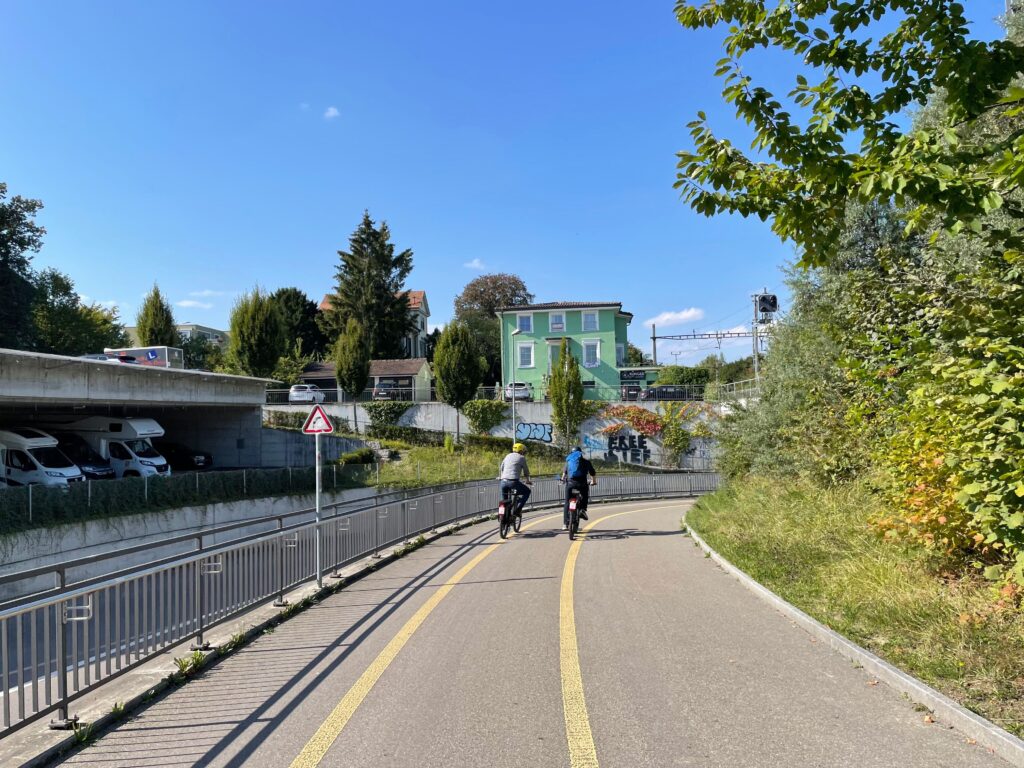
The ride was an interesting experience for all participants. Here are some of the reflections that were shared after the tour:
- The travel speed was usually around 25 km/h, hardly exceeding 35 km/h.
- The lack of acceptance by drivers to ride speed-pedelecs on German roads was astonishing. A well-maintained cycle lane existed next to the road, so some confusion was expected. Comments such as “they have to be weary of life!” or “the bike path is over there!” were received on rural roads with a speed limit of 100km/h as well as on inner-city roads with a speed limit of 30 or 50 km/h.
- It was practically impossible not to break any rules in Germany, for example, the group used the bus lane, even though it was not allowed.
- After crossing the border into Switzerland, the group felt a wave of relief and relaxation. However, they observed that the bike paths were quite narrow, even grouping pedestrians and cyclists into the path. This made it difficult to overtake slower cyclists and pedestrians, and using the road instead would have been against the rules.
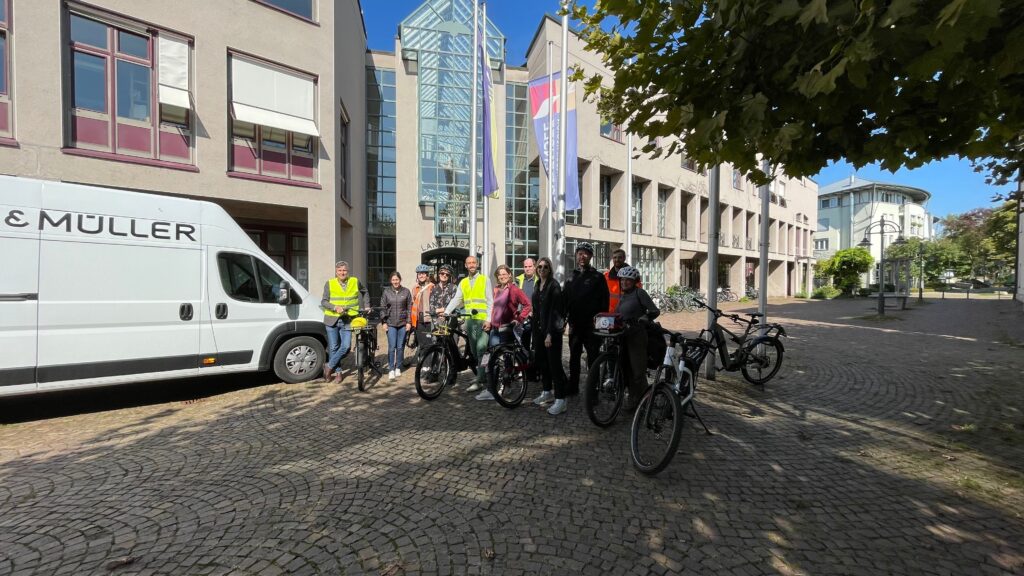
So, are speed-pedelecs a threat, or should they be on protected bike paths? While cycling on main roads, the participants felt unsafe and a strong need for separation from cars. One key takeaway from the group was that speed-pedelec users can certainly cycle slower than 45 km/h, as it is unnecessary most of the time to go that speed – whether on mixed-use roads or bike paths.
Would you like to learn more about Speed-Pedelec regulations in various European countries? Check out our report here.
 ">
">Dagmar Köhler
“Transport is not an end in itself but a key enabler to live, work, participate and thrive. In most parts of the world the potential of active travel is yet to be elevated. I am committed to help cities in Germany and abroad to connect with the Dutch experience and reflect on overarching goals and local necessities.”

